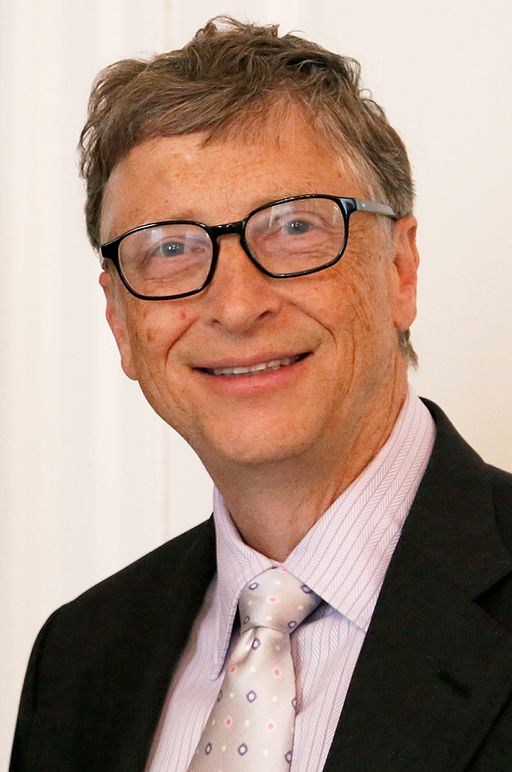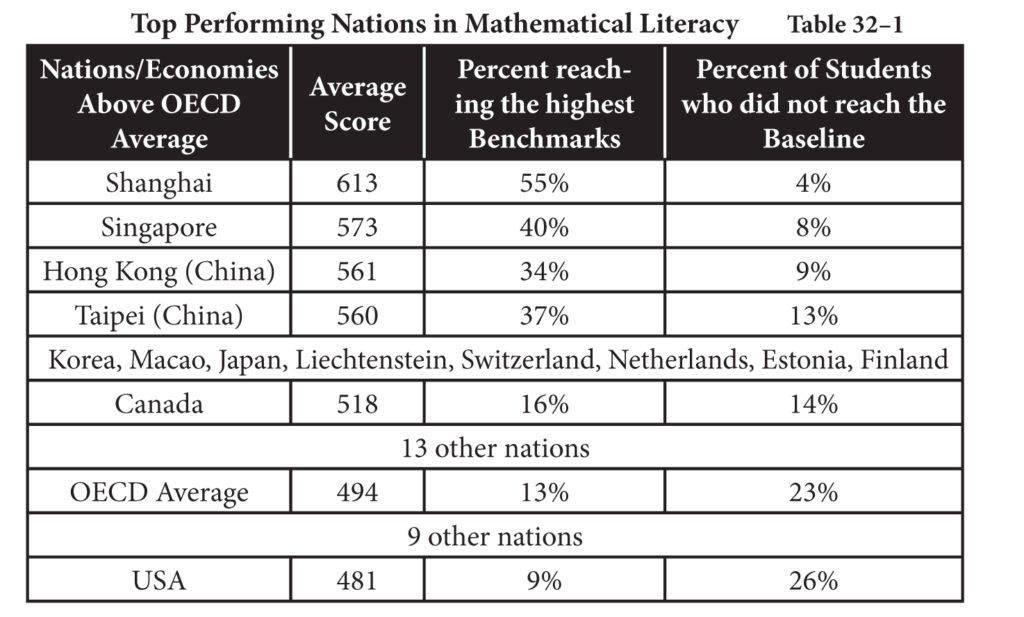
On October 19, the Bill and Melinda Gates Foundation announced that they would be providing an endowment of $1.1 billion over the next 4 years for rebuilding mathematics education in America. The goals of the endowment are:
• to obtain more and better-trained mathematics teachers,
• to create a new offering of motivational and inspiring teaching materials,
• to help students acquire mathematical literacy and a deeper understanding of math concepts through engaging activities.
At a time when the two political parties in America are focussing on other issues in their campaigns, we pay tribute to the trustees of the Gates Foundation for their insight in recognizing that enhancing mathematics education is a vital priority in building the long-term economic future of America.
In this post and several that will follow during the week, I will share with you some things that are not widely understood, nor widely discussed in the media, though apparently well understood by the trustees of the Gates Foundation.
Human Capital & Economics
In the preface to The Human Capital Report 2015, Klaus Schwab, founder of the World Economic Forum stated:1
Talent, not [monetary] capital, will be the key factor linking innovation, competitiveness and growth in the 21st century. More than a third of employers globally reported facing difficulties in finding talent last year and nearly half expected talent shortages to have a negative impact on their business results. Yet the world’s pool of latent talent is enormous. To unlock it, governments, business leaders, educational institutions and individuals must each understand better the global talent value chain.
In that report, the World Economic Forum rated 124 countries on the efficacy of their efforts in developing human capital and tracked their progress over time. The rating, called the Human Capital Index compiled, into a single score, data on the levels of education, skills and employment available to people in each of 5 distinct age groups. The top performing country on the Human Capital Index was Finland, followed by Norway, Switzerland, Canada, and Japan. The United States Was in 17th position.
The important link between technological literacy and economic productivity had previously been recognized by the Organisation for Economic Co-operation and Development (OECD) who launched a series of international studies in the early decades of the 21st century. The first of these, the Programme for International Student Assessment (PISA), was initiated in 2000, and every three years thereafter, to explore the literacy skills of 15-year-olds across the OECD and partner nations. The intent of the PISA studies was to help educational jurisdictions design their curricula and teaching practices to better serve the skills required in the information age.
The PISA report concluded:
Proficiency in mathematics is a strong predictor of positive outcomes for young adults, influencing their ability to participate in post-secondary education and their expected future earnings.
Table 32–1 (below, excerpted from https://www.intelligence-and-iq.com/intelligence/ ) summarizes some of the findings of the global assessment of mathematical literacy reported in PISA 2012 Results in Focus: What 15-year-olds Know and What they Can Do with What they Know.
The following inferences about the state of mathematical literacy were drawn from the data in that PISA study.

• About 13% of students in the OECD countries (and 9% in the US) attain the higher levels of mathematical literacy, that include the ability to develop and work with models for complex situations, and work strategically using broad, well-developed thinking and reasoning skills.
• 23% of students in the 34 OECD countries (compared to 26% in the US) did not reach the baseline, meaning that they were unable to extract relevant information from a single source and use basic algorithms, formulae, procedures, or conventions to solve problems involving whole numbers.
Results of the PISA tests in 2018, revealed little change as China was in the top spot and the U.S. in 37th place. Last month, data from the NAEP (National Assessment of Educational Progress) tests revealed that the 9-year-old students scored, on average, seven points lower in math in 2022 than in 2020–a drop attributed to the COVID-19 pandemic.
While it’s important to the development of a country’s economic base to have a mathematically literate population, it may be even more critical to have an appropriate mathematical environment for the “brightest and best” students–including those who demonstrate outstanding mathematical ability. Bill Gates, co-founder of Microsoft, Steve Jobs, founder of Apple and Pixar, Jeff Bezos, founder of Amazon and Elon Musk, founder of several companies including SpaceX, are all mathematically gifted people. Their collective vision has changed our means of travel, retail, and communication in ways that few of us had ever imagined possible. Assisting the brightest young people in developing their insights, skills and innovations is the greatest gift we can give to them and to the country..
Military Security
In The Code Book, author Simon Singh observed:2
Although cryptography is now having a major impact on civilian activities, it should be noted that military cryptography remains an important subject. It has been said that the First World War was the chemists’ war, because mustard gas and chlorine were employed for the first time, and that the Second World War was the physicists’ war, because the atomic bomb was detonated. Similarly, it has been argued that the Third World War would be the mathematicians’ war because, mathematicians will have control over the next great weapon of war–information. Mathematicians have been responsible for developing the codes that are currently used to protect military information. Not surprisingly, mathematicians are also at the forefront of the battle to break these codes.
Early in 2009, the uranium enrichment program at Natanz in Iran began to experience difficulties. The rotor speed of the centrifuges would randomly increase and decrease, causing gyrations that would ultimately destroy them. It was subsequently discovered that a malicious computer worm, later called Stuxnet, had infected the programmable logic controllers that monitor the operations of the centrifuges. The worm was cleverly designed to disarm the system’s warnings of malfunction until significant damage was done. (The creator of Stuxnet was not revealed, but it has been suggested that the US military had a role in its development.) This was a clear example of a cyberweapon used for international sabotage, suggesting that the next war may, indeed, be waged by mathematicians from other countries. The current war in Ukraine, involving a matching of technologies, is a reminder that artificial intelligence, control of the communication infrastructure, and technological sophistication are becoming vital to a nation’s survival.
As you may have observed in the PISA results above, the Chinese understand the importance of mathematics and they are redoubling their efforts to make their best and brightest second to none. The graph below shows that they have won the Mathematics Olympiads significantly more often than any other nation.
Figure 34.3 displays the nation whose team stood first in the IMO Competition each year between 1985 and 2018.

We see that in this 34-year period, the Chinese team came first 18 times, Russia (including the USSR) 5 times, the USA 5 times, Romania 3 times, South Korea twice, and Bulgaria and Iran once each. In the 4 years following the creation of this table, the US tied with China in 2019 and China stood first in 2020, 2021 and 2022.
We owe a debt of gratitude to the trustees of the Gates Foundation for their ability to read the tea leaves.
1. Klaus Schwab’s statement can be found in the preface of The Human Capital Report 2015, accessible at: http://www3.weforum.org/docs/WEF_Human_Capital_Report_2015.pdf
2. “Although cryptography is now having a major impact …” found in Singh, Simon. 1999. The Code Book: The Science of Secrecy from Ancient Egypt to Quantum Cryptography. New York: Random House. p. xv.

Your comment wasn’t clear. If you would like to submit it, I’d be pleased to responds.